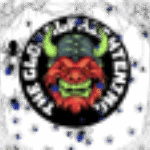If you’re looking to creep out your readers and keep them up at night, you’re in the right place. These 10 horror plot ideas go beyond the usual ghosts and gore. They twist the familiar, prey on psychological fears, and bring in fresh narrative structures to fuel your next novel. Let’s dive into the darkness.
1. The Doppelgänger Blood Curse
Concept: Every time the protagonist bleeds, a twisted clone of themselves emerges. These clones look identical at first but grow increasingly malevolent.
Twist: One day, the original doesn’t return. Only one can survive.
Why it works: Identity horror is unsettling. Readers question who the real protagonist is, and what “real” even means. Think The Murders of Molly Southbourne by Tade Thompson.
2. The Spiral Town That Consumes You
Concept: A town laid out in a spiral, where every street curves inward. Newcomers find themselves psychologically altered the closer they get to the center.
Twist: No one ever reaches the middle. Each layer peels away a piece of their identity until they become part of the town.
Why it works: Inspired by Junji Ito’s Uzumaki, this idea combines architectural horror with existential dread.
3. The Haunted Memory Hospital
Concept: A psychiatric hospital claims to heal trauma by erasing memories.
Twist: The erased memories come to life as shadow creatures, hunting down their hosts to reintegrate.
Why it works: Memory is core to identity. Removing it doesn’t erase the pain—it externalizes it.
4. The Living Story You Can’t End
Concept: A horror novelist discovers his written scenes start manifesting in the real world.
Twist: Characters start changing the plot on their own, demanding new endings—or writing him out.
Why it works: This metafictional approach blends author and story, reality and imagination. Great for readers who love narrative structure flipped on its head.
5. The False Savior Priest
Concept: A magnetic priest shows up in a small town plagued by disease, offering salvation rituals.
Twist: He’s not saving souls—he’s swapping them. The townspeople are unknowingly becoming hosts for ancient spirits.
Why it works: Themes of trust, faith, and hidden evil resonate deeply, especially in tight-knit communities.
6. The AI That Predicts Death
Concept: A health-tracking app starts predicting exact times of death.
Twist: Users who try to avoid their fate cause a ripple effect, dooming others instead.
Why it works: Combines tech anxiety with the inevitability of death. Addictive, fast-paced, and perfect for a modern horror setting.
7. The Hookman Reborn
Concept: An old urban legend is resurrected—literally. The hook-handed killer returns, targeting teens.
Twist: He feeds on guilt, not fear. The more guilt a victim carries, the more violent his attacks.
Why it works: A moral horror tale wrapped in slasher aesthetics. Think Candyman meets The Babadook.
8. The Babysitter and the Wrong House
Concept: A babysitter keeps getting the classic creepy call: “Have you checked the children?”
Twist: She’s not in the family’s house. The kids aren’t who she thought. And the real parents are missing.
Why it works: Plays on familiarity. Just when readers think they know where it’s going, the floor drops out.
9. The Time-Loop Final Girl
Concept: The lone survivor of a massacre relives the night repeatedly.
Twist: Each loop shifts perspective. Eventually, she experiences the killer’s POV—and it turns out to be her.
Why it works: Psychological horror layered with nonlinear storytelling. A unique way to explore trauma and guilt.
10. The Vineyard of Souls
Concept: A rural vineyard uses an ancient ritual to produce wine that heals diseases.
Twist: The grapes are harvested from human souls. Those who drink it absorb pieces of those people.
Why it works: Elegant horror. Disguises atrocity behind beauty and “miracles.”
What Makes These Ideas Work
- They turn tropes inside out. These stories take common horror foundations—urban legends, haunted houses, religious saviors—and twist them.
- They exploit primal fears. Fear of identity loss, technology, the past, or our own minds drives the terror home.
- They leave room for moral complexity. Your readers will think twice about who to root for.
How to Build on These Twists
- Mix and match. Combine ideas. What if the AI in plot 6 controls the town in plot 2?
- Deepen the characters. The plot is twisted, but make sure the people in it are real. Give them goals, flaws, and agency.
- Play with narrative structure. Time loops, shifting POVs, unreliable narrators—horror loves a format experiment.
- Use slow-burn pacing. Let suspense simmer before the big scares.
- Foreshadow cleverly. Hide the clues in plain sight. Let readers slap their foreheads when they look back.
Horror isn’t just about blood or screams. It’s about unearthing what scares us on a deeper level. These plot ideas are a launchpad—where you take them next is what will make your novel truly terrifying.
Sources:
DIY MFA: Plot Twisting Techniques for Horror and Thriller Novels
ScreenCraft: 101 Terrifying Horror Story Prompts
Fictionary: 50 Horror Story Ideas and Scary Writing Prompts
Robin Piree: 101+ Horror Story Prompts with a Twist of the Unknown
What’s a Horror Plot or Idea That Hasn’t Been Explored Yet But You Would Like to See (Reddit)
110 Horror Writing Prompts (With a Twist)
Brainstorming Ideas for Horror Stories: Which of These Do You Like Best? (Reddit)



![Anomaly-Hunting Horror Title ‘The 18th Attic’ Launches February 2 on PC [Trailer] Anomaly-Hunting Horror Title ‘The 18th Attic’ Launches February 2 on PC [Trailer]](https://i0.wp.com/bloody-disgusting.com/wp-content/uploads/2025/12/18thattic.jpg?resize=900%2C580&ssl=1)

